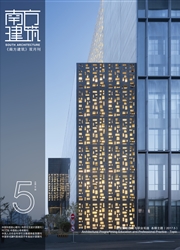
欢迎您!东篱公司
退出

 中文摘要:
中文摘要:
《卫合德堂图记》是一张广州沥滘村的手绘平面地图,在民国十七年的《一万分-广州市全图》基础上绘成.文章通过对“图”和“谱”的阅读和比较,解读了水系、庙坛和祠堂在村落形态结构的主导作用,讨论了沥滘村罗氏和卫氏两大宗族的构建以及在枝状水系条件下村落形态的发展.
 英文摘要:
英文摘要:
Wei Hede Tang Tuji, a map of Lijiao Vilage, was made based on the map of Guangzhou in 1928. From analysis of the map, the paper discusses the social and morphological structuring process of Lijiao Vilage. Historicaly, this waterfront vilage was dominated by Wei Family and Luo Family. The article analyzes the influence of dendritic canal system, shrines and ancestral halls, and significant construction activities by two lineages to structure the village. Shrines and ancestral halls, which respectively symbolized natural order and social order, have shaped the morphological structure of Lijiao Vilage.
 同期刊论文项目
同期刊论文项目
 同项目期刊论文
同项目期刊论文
 期刊信息
期刊信息
